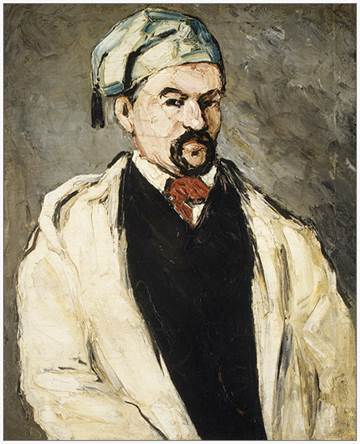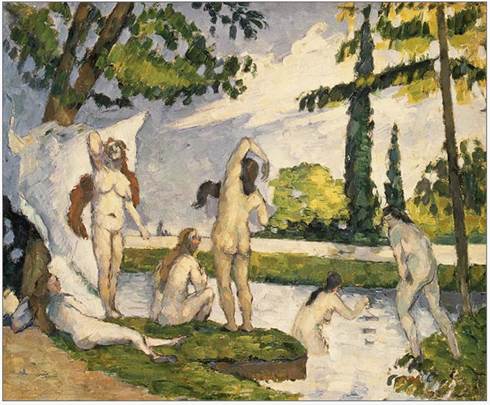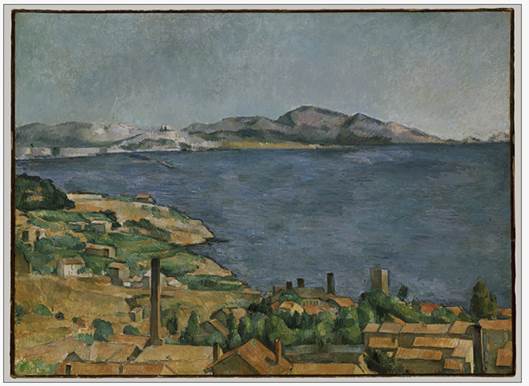Paul Cézanne
(French 1839-1906)
Paul Cézanne is credited with bridging the gap from 19th century Impressionism to 20th century Post-Impressionism. His ability to build form out of color and his approach to colorful depictions of nature inspired both Cubism and Fauvism. Picasso once referred to Cezanne as, “the father of us all.”
Cézanne was born January 19, 1839 in Aix-en-Provence. He was the eldest son of a French banker and former hat maker. Cézanne’s father was a man of business, who pushed his son to become a lawyer.
Cézanne had a love for his hometown landscape. He became close friends with a classmate who would also become famous, Emile Zola. The two of them grew and supported each other in their artistic pursuits. As Zola became an author, Cézanne pursued art, studying at the free drawing school.

Artist's Uncle, 1866

The Bathers, 1874
Many of Cézanne’s early works are dark and followed Eugène Delacroix and Édouard Manet’s style of Romanticism that came before him. These paintings were often thick with heavy paint and featured heavy brushwork.
In 1858, his father enrolled him in law school, but Cézanne was unhappy and enrolled in art school as well. In 1861, he quit law school and went to Paris to be with his friend Emile Zola and to study at the Académie Suisse. It was there that he met his mentor Camille Pissarro.
Pissarro encouraged Cézanne to use bright pigments and to paint outdoors. Cézanne would often paint an environment “en plein-air,” but would later add figures. An excellent example of this is his Bathers series. The environment of the bathers has the brightness of a plein-air painting, but the figures have an imagined quality.
In September of 1861, Cézanne grew discouraged as an artist and returned to Provence to work as a clerk in his father’s bank. He spent the next year scribbling doodles in his father’s ledgers. Both men decided that Cézanne should return to the art word, so he went again to Paris.
While Cézanne was a talented artist, and knew many of the famous painters at the time; Manet, Degas, Renoir and Monet. However, he was also unkempt, shy and mocked anyone that opened up to him.
He lived off of an allowance from his father. In 1869, he took a mistress, Hortense Fiquet, who was an artist’s model. For many years, he used the allowance to hide her and the son she bore for him.

Still Life With Apples, 1890

Gardanne, 1885-86
In April of 1886, he married Hortense and only six months later, his rather passed away. He was left with a significant fortune by his father, and could concentrate on painting without worrying about finances. This was also the year that he and Zola ended their friendship. Zola had mailed a copy of his newest book L’Oeuvreto Cézanne. The protagonist was a talentless artist who eventually commits suicide. Cézanne saw himself in the character and took offense. He responded with a note to Zola thanking him and never spoke to him again.
At the age of 50, Cézanne was finally gaining notoriety as an artist, but he was also diagnosed with diabetes and grew depressed as his health declined. In 1890, he was invited to exhibit with the avant-garde group in Brussels, and in 1895, Pissarro convinced Vollard to organize an exhibit featuring Cézanne.
In the years after 1900, Cézanne became more secluded and focused entirely on his art. His wife and son lived in Paris, but he remained in Provence. Young artists made trips to visit him as he painted outside. On a rainy October day, he was caught in a rainstorm and brought home in a laundry basket. He passed away the next day on October 22, 1906.

The Gulf of Marseilles Seen from L'Estaque, 1885
